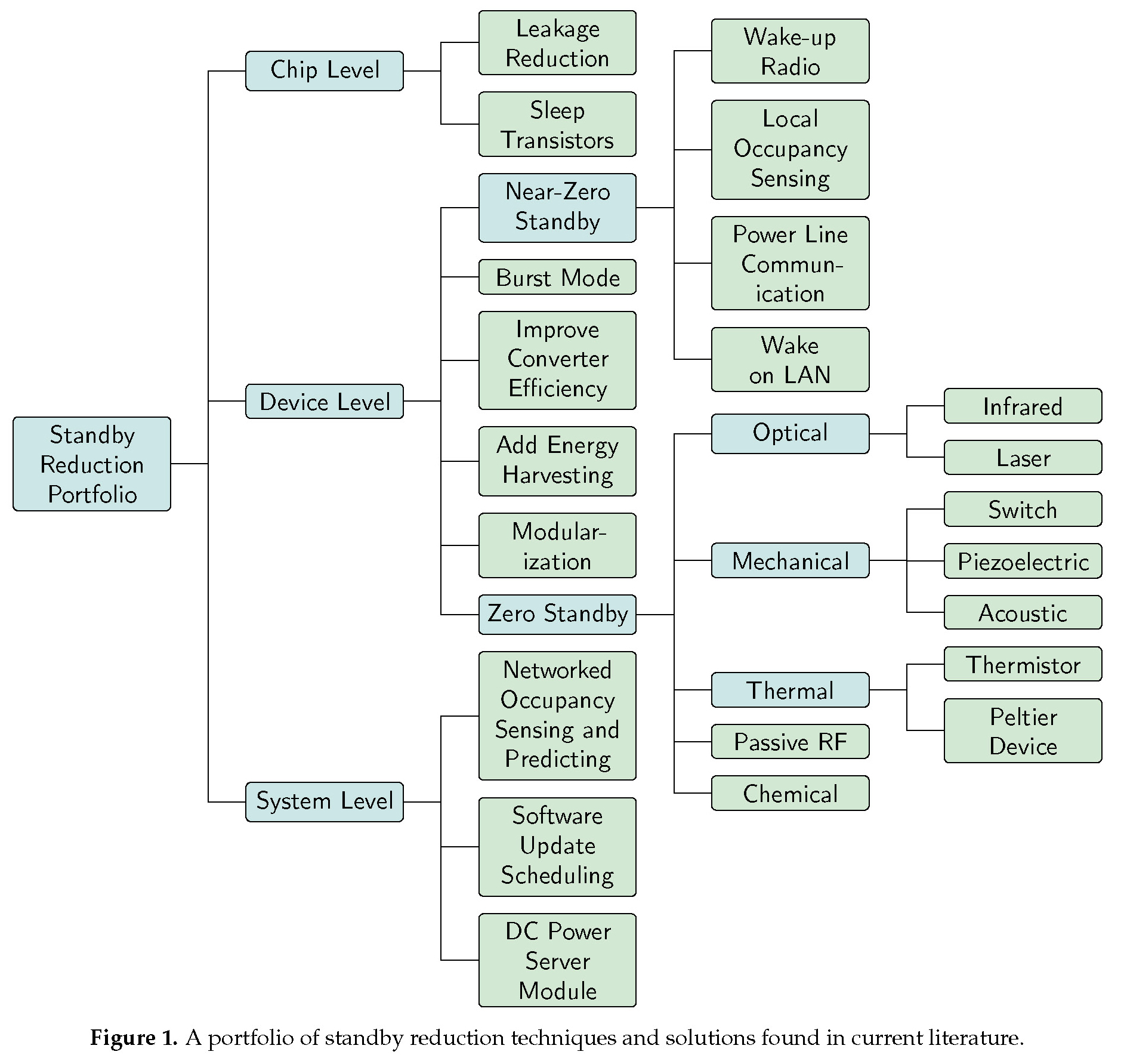Research
Research Approaches to Reduce Standby Power
The wide diversity of electronics with standby necessitates development of a portfolio of solutions. Past works propose numerous standby reduction techniques, some of which are shown in the flow chart (which is by no means comprehensive). These techniques can reduce standby consumption at the chip, device, or system levels. The portfolio concept is further explained and demonstrated in “Emerging Zero-Standby Solutions for Miscellaneous Electric Loads and the Internet of Things” (Gerber, 2019).

Some of the chip-level techniques focus on reducing the quiescent power consumption of an integrated circuit (IC). Reducing device leakage can be achieved through improvements to the IC process, or through the use of sleep transistors. Many of the device-level solutions repurpose the sleep transistor as a discrete solid-state switch.
“Standby-killers" are a family of device-level solutions that use a solid-state switch or mechanical relay to disconnect the device from power when it enters standby. Many of these solutions require an external wake-up signal to activate. Various zero-standby solutions in previous works generate their wake-up signal optically with infrared or lasers, mechanically with switches or piezoelectric devices, thermally with thermistors or peltier devices, or through passive RF (radio frequency) transmission. Near-zero standby solutions use an ultra-low-power receiver to process the wake-up signal. These solutions include wake-up radios, occupancy sensors, power-line communications, or wake-on-LAN.
Other device-level solutions can reduce standby consumption without disconnecting power. Consumption can be reduced at the power converter by improving its efficiency or operating in burst mode. The device can also employ additional energy harvesting and storage to cover standby mode. Finally, the device’s tasks can be modularized and selectively deactivated based on the operation mode. System-level techniques involve controlling the standby status of multiple devices in a network.
Sensing occupancy or predicting user patterns allows a centrally-managed building to selectively turn off unused devices. Another prime target for standby reduction is in Internet-connected devices with automatic updates. Future routers could use a scheduling algorithm to allocate time and bandwidth for the update, and deactivate the device when finished. Another solution is to distribute power through a DC power server module, which can act as a system-wide standby-killer by selectively disabling its ports.
The Future of Standby
Standby power consumption will continue to decline. The power used by devices while not performing their primary functions (or no functions) will be reduced by at least five strategies:
- More efficient power conversion (from AC to DC) and sometimes bypassing conversion entirely;
- More efficient components (notably displays, logic, and controls);
- Cleverer power management, that is, powering down components not needed at that moment;
- More efficient communications and protocols, which enable less communication to occur; and
- Harvesting and storing ambient energy.
All of these require further research and coordination.
But standby won't go to zero in every device because not all devices can exploit these improvements. New features will also appear, which will create additional power requirements. Non-energy constraints will also arise, such as, pressure to reduce weight and parts, and minimizing use of scarce materials.
Virtually every new electrical device now has standby power consumption. The energy consumption caused by standby is not likely to fall as dramatically as we have seen for individual devices because the increase in the number of devices will offset those reductions.